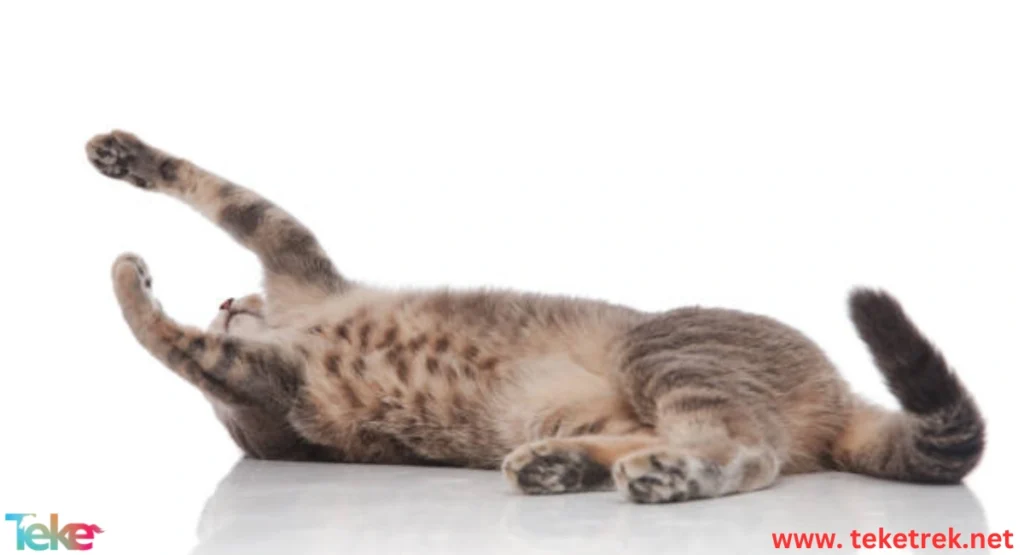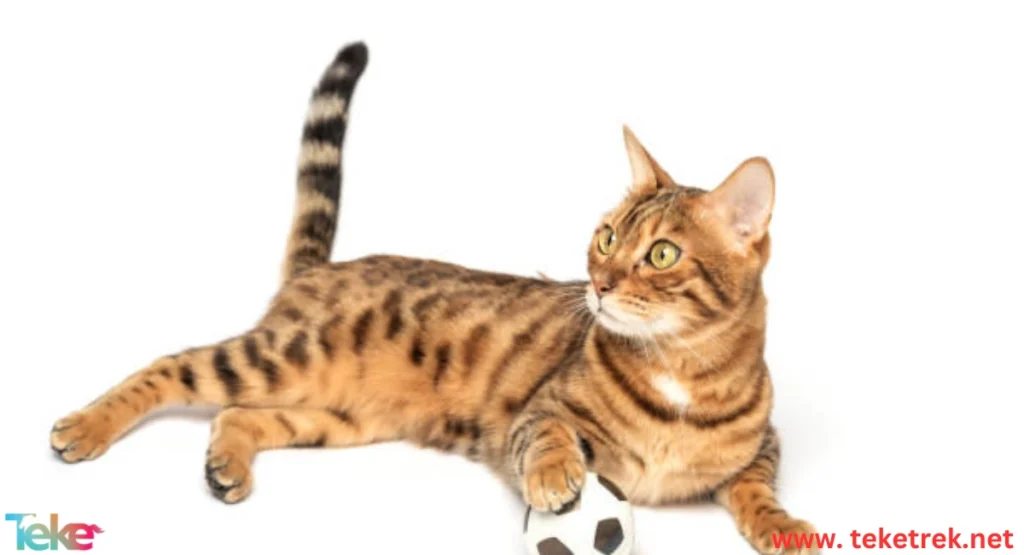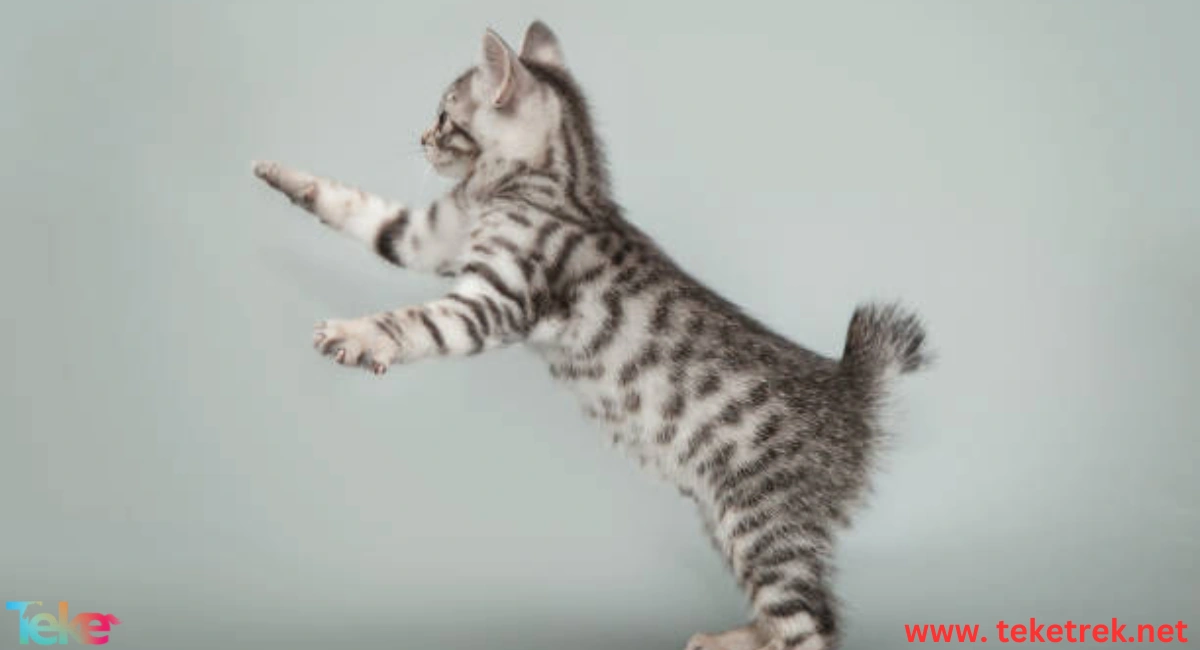It is well known that all animals on earth do not speak human language, but animals do produce intentional sounds and movements to express certain feelings and concepts they experience. Especially pets, where cats perform specific tail movements to communicate with their owners about what they feel and want. Since cats have no other way to express their desires except through their tail and voice, we can understand some of the movements cats make with their tails as expressions of their emotions and needs. Veterinary scientists in many studies have told us that a cat’s tail is the substitute for the human tongue. Through the tail, cats can “speak” and interact with their owners. Therefore, we can clarify the most important tail movements a cat makes to facilitate communication and understanding between the cat and its owner. Here are the details in this article from teketrek.
What Does It Mean When a Cat Raises Its Tail Upwards?
There are several meanings conveyed when a cat raises its tail upwards. Generally, cats do this movement in front of their owners to express certain feelings and information they want to share. Raising the tail upwards can mean:
- A fluffed-up tail indicates a defensive reaction, fear, fright, or feeling threatened by something. The cat tries to tell its owner how it feels by making loud sounds, sudden movements, and puffing its tail. Therefore, the owner should gently stroke the cat’s back to calm it and reduce its tension. It is also important to identify the cause of fear, whether it is another pet the cat fears or a person causing it harm or distress.
- Raising the tail upwards with slow, gentle swaying is a sign of friendliness, trust, readiness to play, socialize, and have fun with those around it. Cats raise their tails during play as a sign of excitement and a desire to keep playing for as long as possible.
- Kittens raise their tails straight up as a greeting to their mothers. This action is repeated frequently as an expression of great happiness, gratitude, calmness, closeness, and comfort.
- Adult cats raising their tails straight up without any bends express love and care. This movement indicates a desire to make new friends with kind and beloved people.

Why Do Cats Shake Their Tails When Stressed or Angry?
Cats perform many typical and atypical movements when they feel stressed or angry. One of the most prominent movements is tail shaking, which indicates:
- Cats shake their tails when feeling annoyed or scared. Sudden tail bristling signals anger.
- A lowered tail with the tip bent upward signifies anxiety and stress.
- Cats may slowly sway their tails when feeling playful and happy, wanting to express their affection and fondness to their owner.
- Shaking the tail from side to side repeatedly is a clear sign of affection and calmness.
Animal Bacteria FAQs: Types, Functions & Effects on Health and Environment
How Do Cats Express Their Feelings Through Tail Movements?
Cats express their feelings through various tail movements to communicate with their owners. These include:
- The tail reveals the cat’s mood, especially feelings of fear or happiness. When happy, a cat gently moves its tail, for example, when being petted or before eating its favorite food. These gentle tail movements express safety and comfort.
- Slow, rhythmic tail swaying signals the cat’s sense of cleanliness and tranquility in its environment. Cats love cleanliness and dislike dirty places, so rhythmic tail movement shows satisfaction with the cleanliness around them.
- A tail that is low and stiff signals agitation and anger, often due to being hit or physically hurt. This movement reflects excessive annoyance and anxiety.
- A cat hitting its tail against the ground is a clear sign of annoyance and anger. To calm the cat, gentle petting and soft kisses can help it relax.
- A fully upright tail signals greeting and peace offered by the cat to its favorite owner. Cats also raise their tails upright when asking for food or inviting play and fun.
- Moving the tail while sleeping on the back or sitting signals discomfort and fear from something making the cat feel unsafe.
- Raising the tail straight up like a stick signals hunger and the desire to eat; the tail relaxes once the cat sees food.
- Panting, opening the mouth, slow walking, and relaxing the tail into a moderate curve along the back indicate internal pain or severe thirst. Owners can place some water nearby and visit a vet if needed.
- Small kittens’ tails tremble when feeling insecure or afraid of larger pets like dogs, goats, birds, or other animals. Wrapping the scared kitten gently with a soft white cotton cloth for one minute helps reduce fear and bring calmness.
Did You Know That Bees Can Recognize Faces Like Humans? Discover the Scientific Secret

Difference Between Tail Movements During Play and Fear
There is a big difference between the meanings of cat tail movements during play and during fear. Each movement is a signal to the owner about the cat’s inner feelings. These differences include:
- During play, cats use their tails rhythmically, smoothly, and calmly to express enjoyment, affection, and bonding.
- Fast and stiff tail movements indicate annoyance and panic, often repeated when the cat sees another pet it fears or when strangers enter the home.
- When feeling threatened or upset, a cat’s body expressions change, including tail, eye movements, and purring sounds. The cat arches its back, fluffs its fur, and puffs its tail, making it look thick and bushy compared to normal. This puffing expresses extreme fear and insecurity.
- When feeling affectionate, the cat lies down and moves its tail with gentle, soft swaying in front of its owner.
- Cats raise their tails straight up at an angle away from the back surface when preparing to attack prey like mice or insects. This signals readiness, focus, and excitement.
- Cats lower their tails when they sense their favorite owner is sad, showing empathy and sharing the owner’s sorrow.
Conclusion
Thus, it has become possible to interpret cats’ body language through their tail movements. Anyone who raises cats at home can understand their movements and the meanings behind them. Paying attention to a cat’s body language is a clear way to understand the desires and emotions cats feel or want to express. Owners should observe tail movements, eye expressions, sitting, standing, and sleeping postures to uncover many secrets and feelings inside cats. Body language is the essential way to understand cats through their expression of various emotions.





